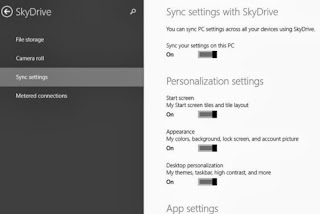The NSA has abused the rights of the citizens by illegally
intercepting, storing and reviewing their private communications. The NSA has been secretly granted authority to
collect data (defined as voice and electronic information traveling across the
Internet) through the Patriot Act in October of 2001. In March of 2004, a Justice Department review
declared that the collection of this data was illegal. The program was then suspended for some time. In 2007 the program was authorized to
re-start. Trouble erupted in 2009 when the
Justice Department acknowledged that they had collected telephone and other
electronic data in a way that exceeded legal limitations. Later, in October of 2011, the Foreign
Intelligence Surveillance Court (FISA) “ruled that the NSA violated the Fourth
Amendment at least once” (Lee, 2013). The ruling associated with the October 2011
violation is secret so specific facts about the ruling are unknown, however
many suspect that the NSA defeated some aspect of the minimization rules (Lee, 2013).
The
NSA not only illegally intercepts and secretly stores the telephonic and
electronic data of people in the United States, it also requests that companies
like Microsoft, Yahoo, Google, Facebook, PalTalk, AOL, Skype YouTube and Apple
provide personal information through the use of court orders (Lee, 2013). Individual users of these programs who have
configured their account to restrict access have no way of knowing that their
data is being intercepted and analyzed.
This illegally collected data is accessed illegally and may be used
against them without their knowledge.
The
collection of information from these companies has potentially injured their
reputation by their users who expect them to protect their data and respect
their privacy. This information has only
recently become public. Facebook has
fought off the notion that they had a choice on whether to provide the data,
have made public attempts to assure their flock that they have acted
responsibly and that they have been vigilant in requests to the government to
publicize the activity. Their newsroom report states that they have urged the
government “to allow companies to divulge appropriate information about
government orders and requests that we receive, in a manner that does not
compromise legitimate security concerns” (Ullyot, 2013). Facebook pledges that they will vigilantly
protect their users’ data but also states that they have complied with between
9,000 and 10,000 requests from all government entities between June and
December of 2012 (Ullyot, 2013).
It’s
time to look back at this secret activity being handled by the NSA and see how
this activity is in direct violation of the Bill of Rights. The activity violates the First Amendment,
“Congress shall make no law respecting an establishment of religion, or
prohibiting the free exercise thereof; or abridging the freedom of speech…” (The Bill of Rights). The collection of data has prohibited our
exercise of free speech by collecting and examining the data. The First Amendment continues to prohibit the
restriction of a citizens ability “…to petition the Government for a redress of
grievances” (The Bill
of Rights).
Normally citizens can challenge statutes for constitutionality in court however
the activity of the NSA comes from a secret law that cannot be challenged in
court. Furthermore, the FISA court is
not a real court; it is an administrative body that listens only to the
government and operates in total secrecy.
The
Fourth Amendment prohibits warrantless search and seizure. The NSA does not obtain a warrant which would
mandate the accused appear before a federal judge. The process is secret and does not allow the
accused an opportunity to represent himself. In addition, the NSA is permitted to provide
only vague assertions that do not demonstrate that the target is a spy,
terrorist or any other sort of criminal (Sullum, 2013).
The
Fifth Amendment is violated because citizens are not provided protection
against self-incrimination. The NSA
saves and uses evidence they collect, presumes guilt then investigates. The individual does not even know he is being
investigated. The Fifth Amendment states
“no person shall be held to answer for a capital, or otherwise infamous crime,
unless on a presentment or indictment of a Grand Jury … nor shall be compelled in any
criminal case to be a witness against himself, nor be deprived of life,
liberty, or property, without due process of law; nor shall private property be
taken for public use, without just compensation” (The Bill
of Rights). The NSA’s collection and processing violates
the Fifth Amendment.
The
collection and use of data is a violation of the Sixth Amendment as a target is
not allowed to confront the NSA and has no right to trial. The Sixth Amendment
states that the accused shall “be informed of the nature and cause of the
accusation; to be confronted with the witnesses against him; to have compulsory
process for obtaining witnesses in his favor, and to have the Assistance of
Counsel for his defence” (The Bill of Rights). The practice of the NSA does not permit an
accused person to even know that he is being observed and analyzed.
The
Ninth Amendment, “The enumeration in the Constitution, of certain rights, shall
not be construed to deny or disparage others retained by the people” prohibits
the government from restricting freedoms that are not explicitly restricted by
the Constitution (The Bill
of Rights). The government may not declare privacy a
non-right, which is what they are doing.
The
NSA is permitted to intercept communications if at least one part of the
conversation is outside the United States.
Since the requirement specifies that the discrimination occurs, the NSA
is allowed to retrieve bulk information then it must sort it out to remove disallowed
information. In some cases this
determination cannot be made without the intervention of a human analyst (Lee, 2013). Interestingly, this counters allegations that
the metadata collected is analyzed using a mathematical formula, not through
the use of human intervention (Saletan, 2013).
When communications are analyzed by humans there is great potential for
illegal activity including the ability to plant evidence or wrongly accuse an
innocent person.
How
many lives or potential terrorist attacks have been prevented by the illegal
search and seizure of the information by the NSA? During the House Intelligence Committee on
June 18, 2013, General Alexander said, “The information gathered from these
programs provided the U.S. government with critical leads to help prevent over
50 potential terrorist events in more than 20 countries around the world” (Elliott & Meyer, 2013). The NSA has been able to substantiate the
truthfulness of only four threats of the 50.
Of the four known instances where the NSA data was used to solve crimes
none relied exclusively on NSA data to solve the case. In the case of Basaaly Moalin who was
convicted of sending $8500 to Somalia, used to support the terrorist group that
bombed a mall in Kenya, the case could have been solved by simply getting a
court order to retrieve the phone records in question. The case involving Chicagoan David Coleman
Headley who helped plan the 2008 Mumbai terrorist attack used tips from British
Intelligence to solve the case. The case
of Najibullah Zazi, the man who plotted to bomb the New York subway system, did
not require the warrantless powers of the NSA to find him. The FBI has authority to monitor email
accounts of known terrorists, which they had been doing. The last case involving a plot on the New
York Stock Exchange did not result in prosecution (Elliott &
Meyer, 2013). These cases may cause legal problems for the
United States when those accused file lawsuits.
The
collection processes are illegal and they disregard the protections afforded to
Americans in the Bill of Rights. The
unrestricted collection of data has not been demonstrated to actually prevent
terrorism or other crimes. The policy
was created and executed secretly without disclosing information to the
American people. The founders of our
country must be spinning in their graves. The authority of the NSA to illegally collect
data must be reversed and controlled.
References
Elliott, J., & Meyer, T. (2013, October 23). Claim on
“Attacks Thwarted” by NSA Spreads Despite Lack of Evidence. Retrieved from
Pro Publica:
http://www.propublica.org/article/claim-on-attacks-thwarted-by-nsa-spreads-despite-lack-of-evidence
Lee, T. B.
(2013, June 12). Here’s everything we know about PRISM to date.
Retrieved from The Washington Post: http://www.washingtonpost.com/blogs/wonkblog/wp/2013/06/12/heres-everything-we-know-about-prism-to-date/
Saletan, W.
(2013, June 6). Stop Freaking Out About the NSA. Retrieved from The
Slate:
http://www.slate.com/articles/news_and_politics/frame_game/2013/06/stop_the_nsa_surveillance_hysteria_the_government_s_scrutiny_of_verizon.html
Sullum, J.
(2013, November 1). Jacob Sullum: Broad spying law worthy of scrutiny.
Retrieved from Omaha World Herald:
http://www.omaha.com/article/20131101/NEWS08/131109960/1677
The Bill of Rights. (n.d.).
Retrieved from
http://www.archives.gov/exhibits/charters/bill_of_rights_transcript.html
Ullyot, T.
(2013, June 14). Facebook Releases Data, Including All National Security
Requests. Retrieved from Facebook : http://newsroom.fb.com/News/636/Facebook-Releases-Data-Including-All-National-Security-Requests










